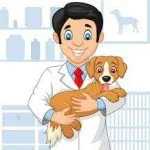
Table of Contents
India on Wednesday successfully landed a spacecraft near the Moon’s south pole, an uncharted territory that scientists believe could hold vital reserves of frozen water and precious elements, as the country cements its growing prowess in space and technology.
A lander with a rover inside touched down on the lunar surface at 6:04 local time, sparking cheers and applause among the space scientists watching in the southern Indian city of Bengaluru. After a failed attempt nearly four years ago, India made history by becoming the first country to touch down near the little-explored South Pole region and joined the United States, the Soviet Union, and China in achieving a moon landing.
The fascinating history of space travel isn’t limited to humans alone. Animals have played a crucial role in advancing our understanding of space exploration. These intrepid creatures paved the way for human missions, providing valuable insights into the effects of space travel on living beings. In this article, we delve into the remarkable stories of animals that made space travel, highlighting their contributions and the knowledge gained from their journeys.
Animals That Made Space Travel
Dogs: From Laika to Belka and Strelka
Dogs have held a special place in the annals of space travel. Laika, a stray dog from Moscow, became the first living being to orbit the Earth aboard Sputnik 2 in 1957. Her sacrifice paved the way for future space missions. Belka and Strelka, two other canine cosmonauts, followed suit, successfully returning from their mission in 1960. These brave dogs provided critical data on the effects of space travel on vital signs and overall well-being.
Monkeys: Albert I, Albert II, and Albert III
Monkeys also contributed significantly to space research. Albert I, a rhesus monkey, made history in 1948 by becoming the first primate to reach the edge of space. Although his flight was suborbital, it marked a significant step forward. Albert II and Albert III followed with subsequent missions, helping scientists gather data on acceleration, radiation, and physiological responses to space travel.
Mice and Rats: Unveiling Biological Insights
Mice and rats have been instrumental in studying the effects of microgravity on biological systems. Their adaptability to laboratory settings makes them ideal research subjects. These rodents have aided scientists in understanding bone density loss, muscle atrophy, and other physiological changes that occur during extended space missions.
Fruit Flies: Decoding Genetic Impact
Fruit flies, with their rapid reproductive cycle and simple genetic makeup, have offered insights into the genetic impact of space travel. Studies involving these tiny creatures have revealed information about DNA damage, mutations, and the effects of cosmic radiation on living organisms.
Tortoises: Slow and Steady Cosmic Explorers
Tortoises may not be the first creatures that come to mind for space travel, but they have made their mark. These resilient creatures have been part of various missions, helping researchers understand the long-term effects of space travel on metabolism, circadian rhythms, and behavior.
Cats: Probing Vestibular Systems
Cats have contributed to space research by providing insights into the effects of microgravity on the vestibular system, which controls balance and spatial orientation. These studies have implications not only for space travel but also for understanding motion sickness and related conditions on Earth.
Birds: Avian Contributions
Birds have also participated in space experiments, shedding light on avian biology and the effects of microgravity on flying creatures. Studying birds in space has provided valuable information about musculoskeletal changes and adaptations to weightlessness.
Fish: Aquatic Insights into Space Travel
Believe it or not, fish have been part of space missions, too. Zebrafish, for instance, have been used to study the effects of microgravity on the cardiovascular system and bone development. Their transparency as embryos allows scientists to observe physiological changes in real-time.
Insects: Microgravity and Behavior
Insects, such as ants and bees, have been sent to space to study their behavior in microgravity. These experiments help scientists understand how fundamental behaviors like foraging and communication are affected in altered gravitational conditions.
Guinea Pigs: Cardiovascular Studies
Guinea pigs have provided insights into the cardiovascular effects of space travel. These small mammals have helped scientists understand changes in heart rate, blood pressure, and overall cardiac health in microgravity.
I am a pet expert dealing with Cats, Dogs, Birds, Rabbits and Aquarium fish for the last 10 years. Now it is time to share my knowledge with you. I am very passionate about sharing everything that I learned so far about pet care. Watch my Youtube channel Petfather






